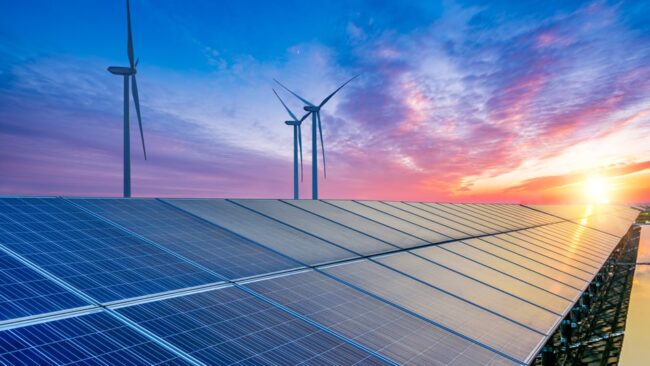Renewable energy sources like solar power are inherently variable, with energy production dropping when the sun isn’t shining. This intermittency creates challenges in meeting energy demands. However, when the sun does shine, solar panels can generate excess electricity, sometimes overwhelming the grid and causing electricity prices to plummet, or even turn negative.
Virtual power plants (VPPs), which are decentralized networks of batteries and energy sources such as electric vehicles (EVs), offer a promising solution for achieving a 100% renewable energy system.
The Challenge of Renewable Energy Volatility
Solar and wind energy are not consistent. On cloudy days or during winter when the wind is still, renewable energy production can fall short of demand. Traditionally, gas-powered plants would fill in these gaps. However, as more renewables are integrated into the grid and fossil fuels are phased out for climate protection, this intermittency becomes a more pressing issue.
Another challenge arises when solar panels feed an excessive amount of electricity into the grid, leading to a surplus. This oversupply can cause market prices to drop, rendering the electricity nearly worthless. It’s a frustrating paradox of the energy transition—having an abundance of cheap electricity that goes unused.

From Energy ‘Prosumers’ to ‘Flexumers’
Currently, renewable energy systems often operate in a conventional manner. Homeowners, known as ‘prosumers’ because they both produce and consume energy, typically feed electricity from their solar panels into the grid when their batteries are fully charged. These systems, however, lack sophistication and adaptability.
The future of solar energy lies in smarter, more connected systems. Prosumers will evolve into ‘flexumers,’ integrated into the grid and responsive to market signals. Just as modern software updates can enhance the capabilities of an autonomous vehicle, the domestic solar energy system of the future will remain the same in hardware but become much more advanced in software.
The Role of Sector Coupling in Solar Energy’s Future
The key to this transformation is ‘sector coupling,’ which involves merging the previously separate domains of electricity, heat, and fuels. In the future, electricity won’t just power lights and appliances but will also be used for heating via heat pumps and for charging EVs at home.
An electric vehicle, for instance, is essentially a large, mobile battery. The battery of a mid-sized EV like the Volkswagen ID.3, with a capacity of 62 kWh, can store enough electricity to power a typical family home for 6-7 days. With Germany aiming for 15 million electric cars on the road by 2030, the potential for using EVs as mobile storage is immense.
These vehicles, often parked for 23 hours a day, can be integrated into a smart energy management system that allows bi-directional charging—where power flows between the grid and EVs. Heat pumps, which store heat energy, can also be optimized to operate when electricity is cheap, further stabilizing renewable energy supplies.
Creating a Decentralized Battery Network at Home
Home batteries, EVs, and heat pumps can be connected to form a vast, decentralized battery network with a capacity comparable to several nuclear power plants, but with far greater flexibility.
For example, German renewables company Enpal aims to achieve a capacity of over one gigawatt by 2026 through such decentralized networks. These networked batteries, or VPPs, intelligently manage and aggregate electricity generation, storage, and consumption from participating households, while also trading electricity on the market.
The system charges storage units or EVs when electricity is cheap or when household solar panels generate excess energy, and it sells electricity back to the grid when market prices are high due to low sunlight or wind. This AI-based platform allows homeowners to significantly reduce costs and even earn additional income. Moreover, the smart integration into the energy market is paving the way for a future where solar energy can thrive without subsidies.
Optimizing Energy Operations with Virtual Power Plants
VPPs play a crucial role in optimizing energy operations in the intraday continuous market. They decentralize the storage of surplus electricity when the grid is overloaded and inject electricity back into the grid when needed. This helps reduce peak loads, ensure a more even distribution of electricity, and stabilize the grid.
By managing these decentralized energy sources efficiently, VPPs are not just a future trend—they are a necessary evolution in the journey towards a fully renewable energy system.
COMMENTS